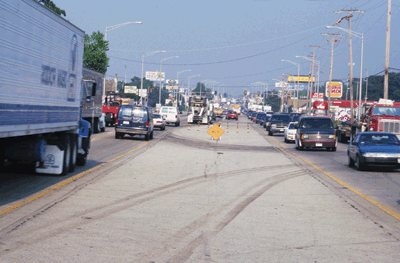Although $7.3 billion and 87,000 jobs are very large figures, they are almost certainly low estimates as a consequence of the limited scope of this assessment and the inability to quantify certain costs. For instance, other costs associated with congestion but not accounted for in this study include stress, fender-benders, noise, and the price tag for unsuccessful strategies to limit or speed up traffic. Additionally, congestion considered here is only recurrent congestion — congestion that occurs on a predictable pattern as a result of greater demand for roads than capacity constraints allow. Congestion resulting from incidents, such as traffic accidents or construction, is not included in this report, but does inflict additional costs on the Chicago region.
In addition, the most recent study of the costs of congestion on metropolitan Chicago, the annual Texas Transportation Institute’s (TTI) Urban Mobility Report, assessed Chicago ’s cost much lower, at $4 billion. Moving Beyond the Speed of Congestion measures congestion over a longer portion of the day and larger segment of the region’s road network. Most importantly, this report’s estimates of current average speeds, based on 2005 data from the Chicago Metropolitan Agency for Planning, are lower than the average speeds TTI estimates.
 This report improves upon previous understandings by using a more contextually nuanced approach to assessing congestion in northeastern Illinois , which accounts for a wider range of costs. It also uses more sophisticated models and databases. Furthermore, this report provides a spatial understanding of congestion. A county-by-county breakdown of congestion share and costs gives a more accurate, and ultimately more useful, picture of congestion’s costly implications.
This report improves upon previous understandings by using a more contextually nuanced approach to assessing congestion in northeastern Illinois , which accounts for a wider range of costs. It also uses more sophisticated models and databases. Furthermore, this report provides a spatial understanding of congestion. A county-by-county breakdown of congestion share and costs gives a more accurate, and ultimately more useful, picture of congestion’s costly implications. Return to the main page of Moving at the Speed of Congestion.